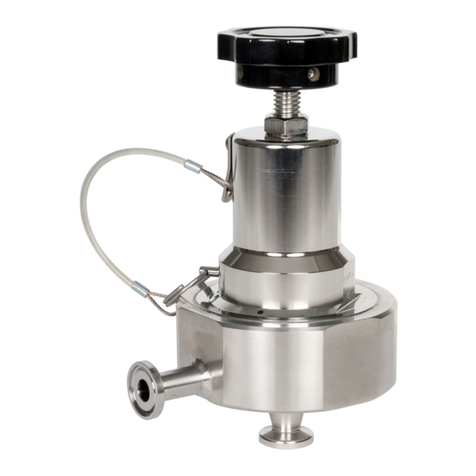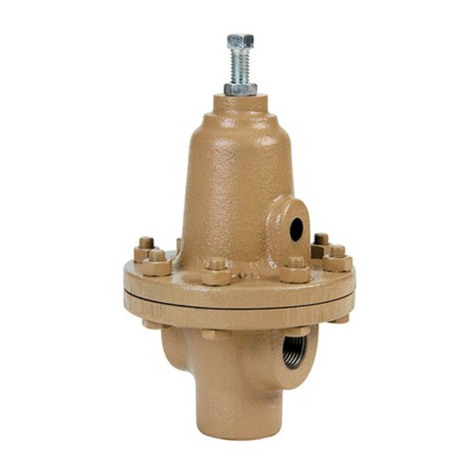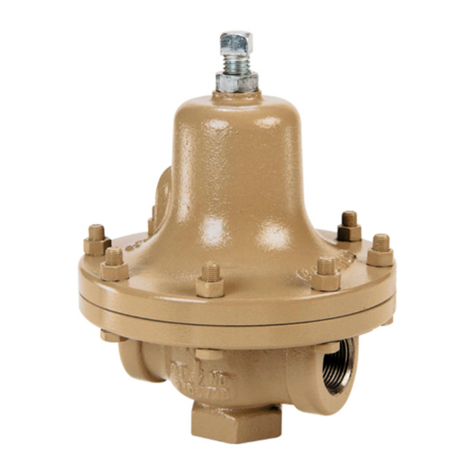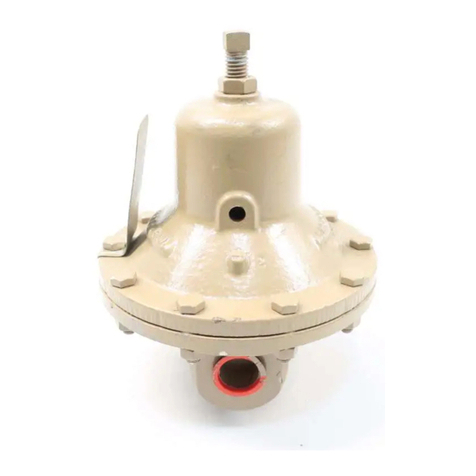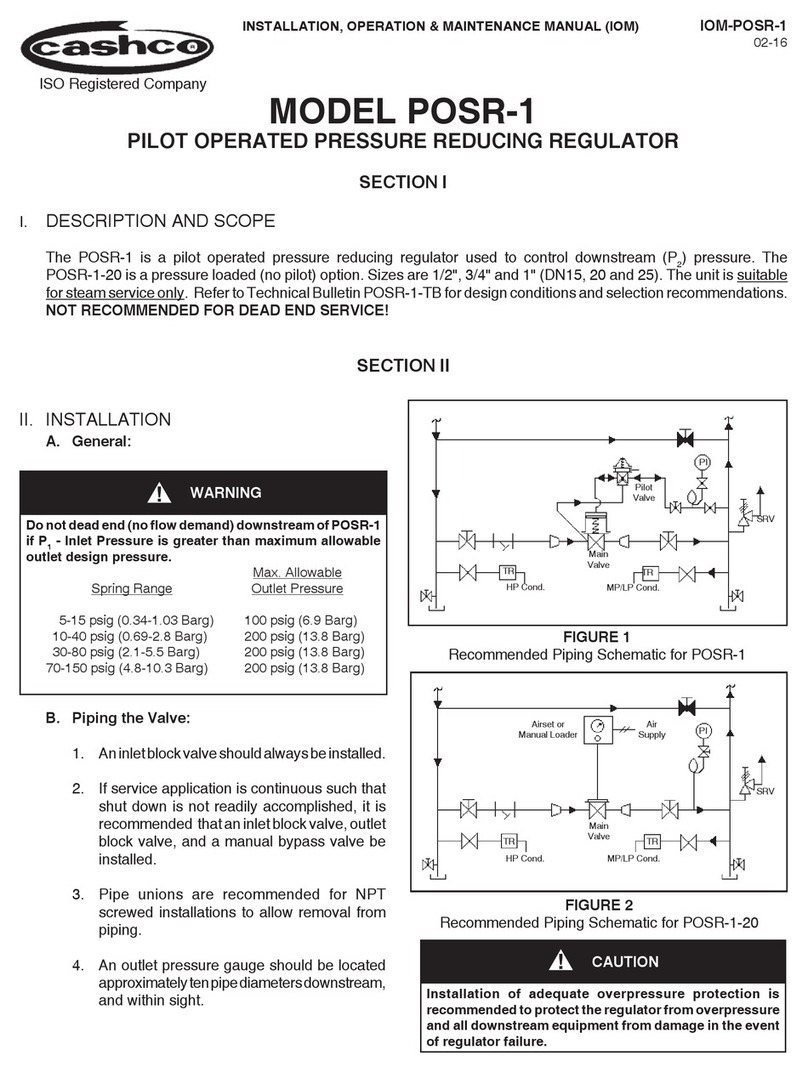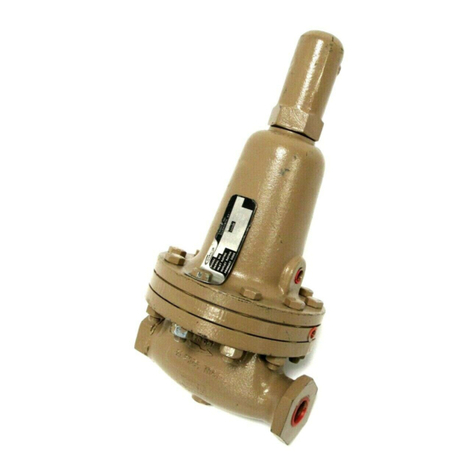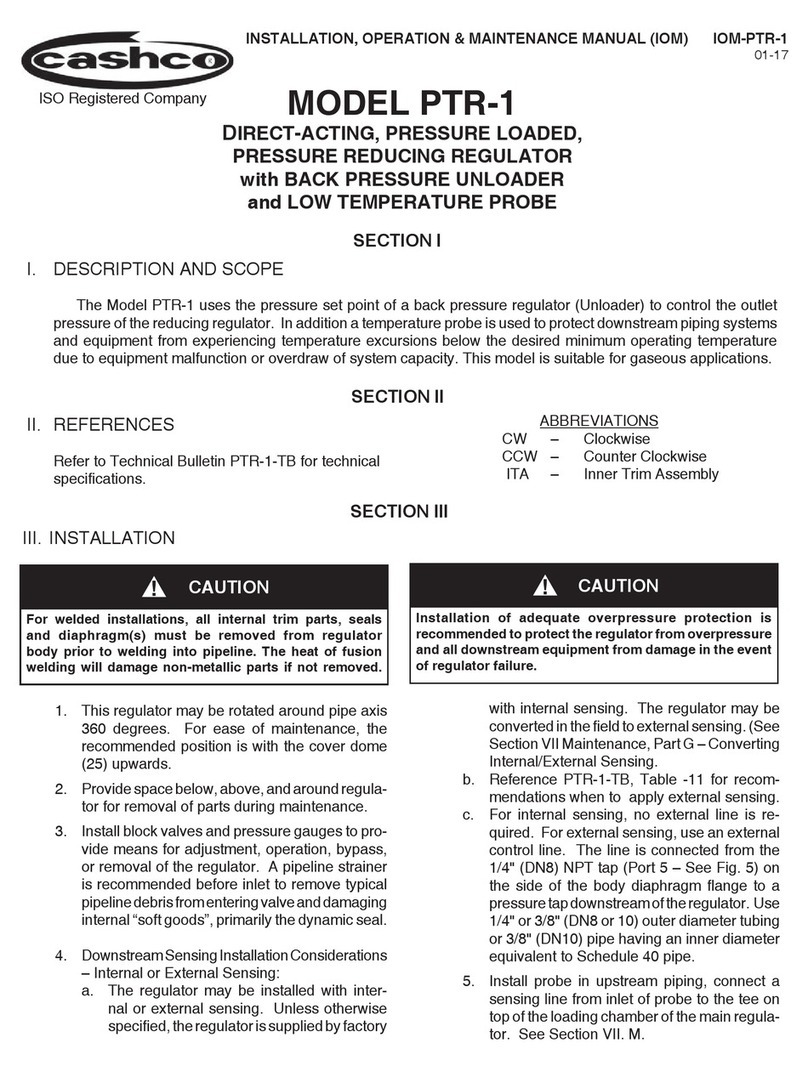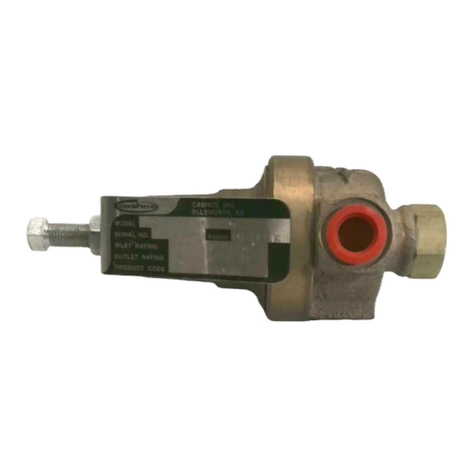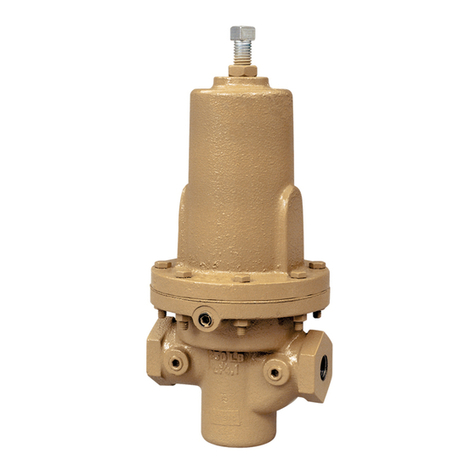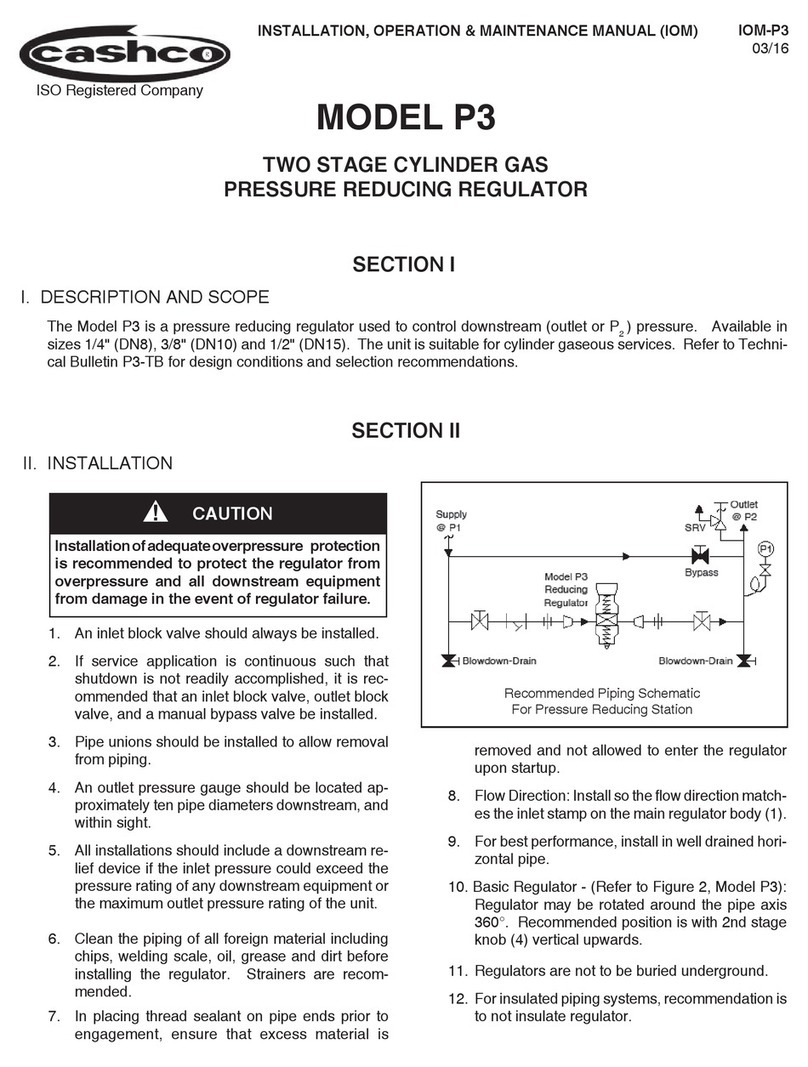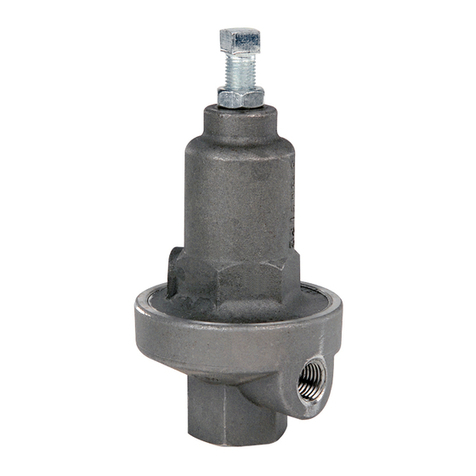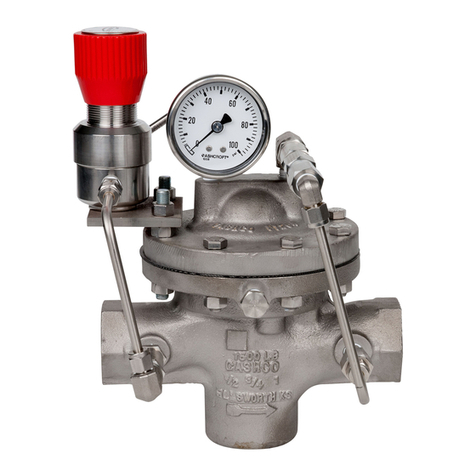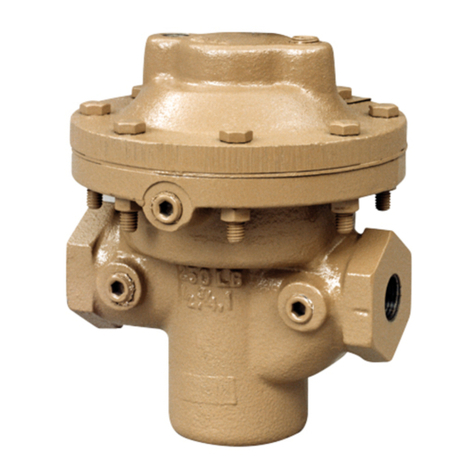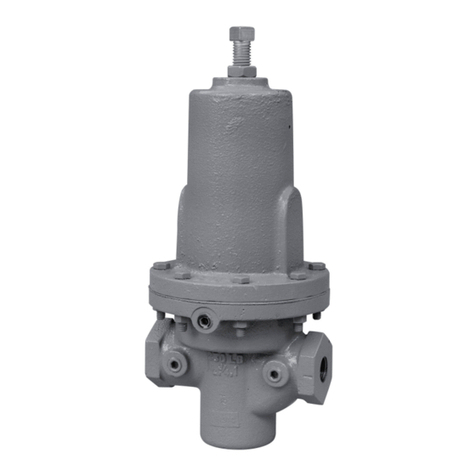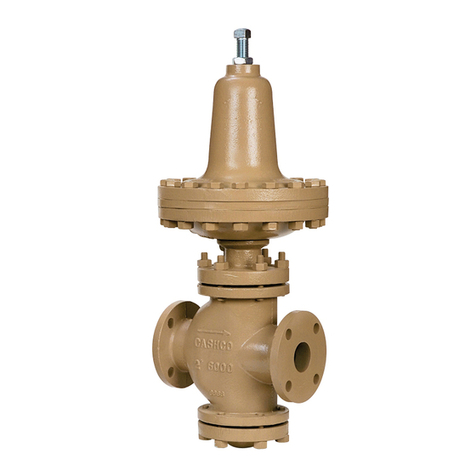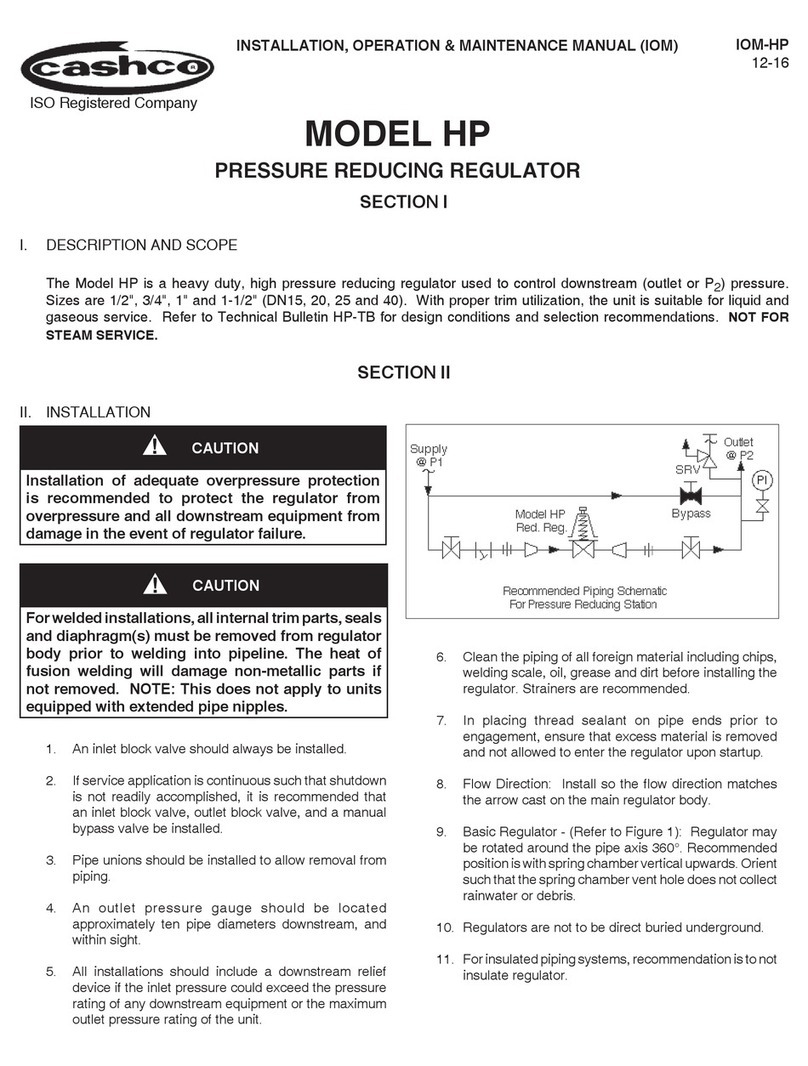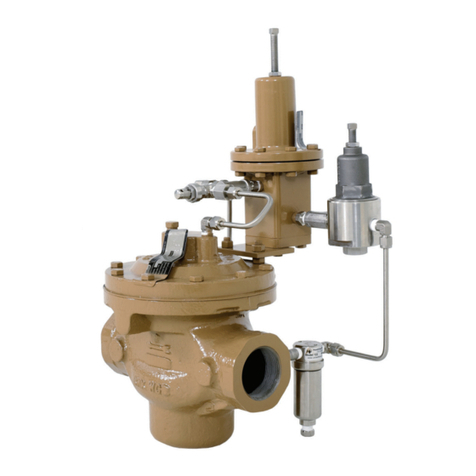
IOM-123-1+6 +S DIFF 3
B. Disassembly:
1. Securely install the body (1) in a vise with the
spring chamber (2) directed upwards.
2. Remove closing cap (22).
3. Loosen sealing locknut (9) by rotating CCW.
Relax range spring (18) by turning adjusting
screw (17) CCW.
4. Draw or embed a match mark between
body (1) casting and spring chamber (2)
subassembly along flanged area.
5. Remove all body flange hardware
(7,8,30,41,42).
6. Remove spring chamber (2) and connected
parts, range spring (18) and spring button
(19).
DO NOT ATTEMPT TO REMOVE ADJUSTING SCREW
(6) FROM TOP OF SPRING CHAMBER (2). The
adjusting screw (6) is threaded up from inside the
spring chamber (2) and the CCW rotation used to
relieve range spring (14) tension will come to a stop.
At the stopping point, do not apply any torque to
adjusting screw (6) or damage may occur and render
the unit inoperable. See Figure 1.
CAUTION
7. Adjusting screw (17) o-ring inspection:
a. With locknut (9) and closing cap (22)
removed, turn adjusting screw (17) CW
as far as possible by grasping the flats
on top end. Carefully reach inside spring
chamber (2) and grasp adjusting screw
(17) by hand. Remove adjusting screw
(17) by rotating CCW. See Figure 1A.
b. Inspect the backup ring (28) and quad ring
(29) for wear. If nicked or torn - replace.
NOTE: Make certain the teflon backup
ring (28) will insert into spring chamber
(2) first, before the quad ring (29). (See
Figure 7 blow-up illustration). Make sure
the quad ring (29) is on straight with
no twist. Use a good grade lightweight
grease on the ring seals (28,29).
c. Lubricate adjusting screw (17) threads.
Carefully reinstall adjusting screw (17)
up into the spring chamber (2) by rotating
adjusting screw (17) CW until top of
adjusting screw (17) protrudes from top
of spring chamber (2) (See Figure 1B.).
NOTE: Care should be taken when
holding and rotating adjusting screw (6)
so the quad ring (29) and backup ring
(28) are not inadvertently nicked or torn.
Grasp top of adjusting screw (17) and turn
CCW until rotation stops (see CAUTION
C).
d. Loosely install the lock nut (9) and closing
cap (22).
8. Liftupandremovethediaphragmsubassembly
consisting of the piston (14), piston nut (6),
diaphragm (3), diaphragm covers (24) (NACE
unit only, Cashco Dwg. 32934), pressure
plate (20), pusher plate (21), sealing washer
(27), pressure plate o-ring (31) and pusher
plate o-ring (34). Remove the flange o-ring
(32).
9. Loosen piston nut (6) and separate all parts
(3,24 (NACE units only),14,20,21,27,31,34)
of the diaphragm (3) subassembly.
Figure 1: Adjusting screw (17) o-ring inspection.
9
28
29
28
29
9
17
17
2
B. Reassembly
A. Removal
2
When body flange hardware (7,8,30,41,42) is removed
from this unit it should always be replaced with new.
The new hardware (7,8,30,41,42) must have the proper
grade specification identification markings and meet
the following standards:
1. All cap screws (7,30) and flange stud nuts (8)
must have "heavy hex heads".
2. All studs (41,42) and cap screws (7,30) must
comply with or exceed the requirements of
ASTM-A-193, Grade B7.
3. All flange stud nuts (8) must comply with
or exceed the requirements of ASTM A-194,
Grade 2H.
New body flange hardware (7,8,30,41,42) may be
purchased from Cashco, Inc. or through the OEM.
CAUTION
